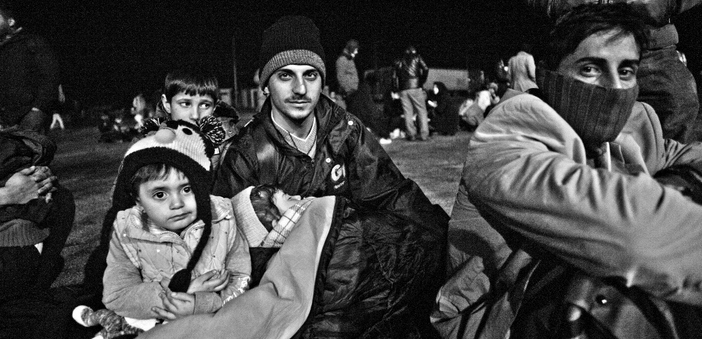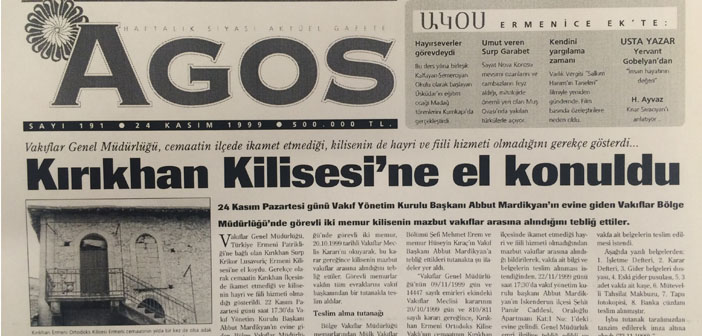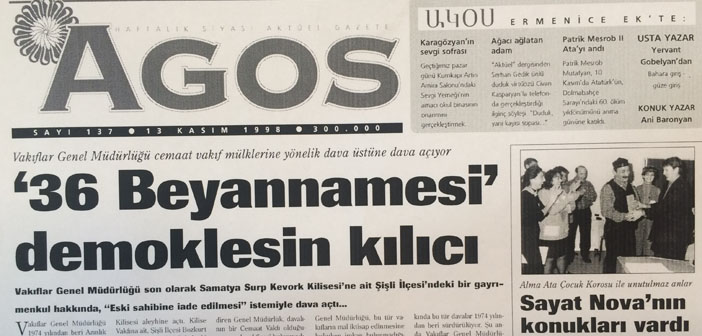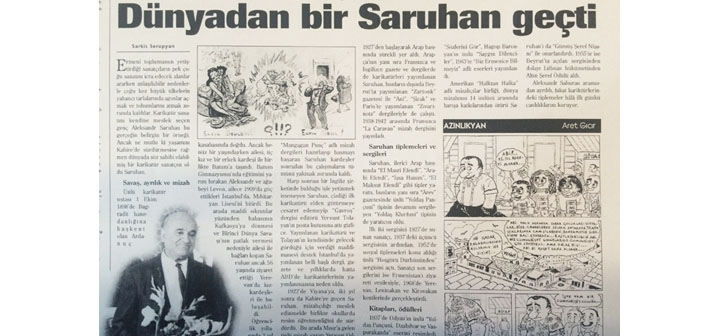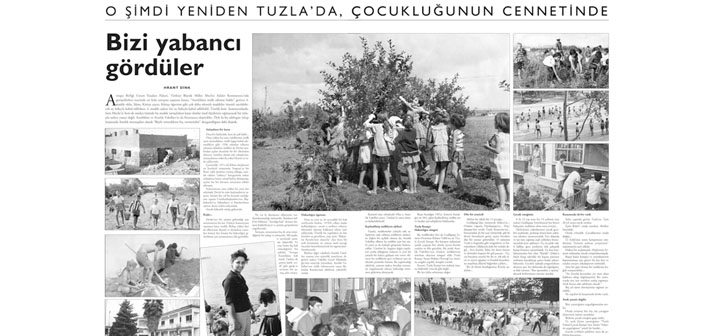SPECIAL REPORTS
Agos’ archive: ‘The Red Church’ and the last Armenians in Derik
Today, in Agos’ archive, there is Surp Kevork Church known as “The Red Church”. Recently, its door was broken down by the security forces. In 2013, Agos published a story on this historical church and the last Armenians in Derik.
Childhood remained in a train to eternity
We talked to Özcan Alper about his movie “Memories of the Wind” and the issue of representing the disaster.
Hope and struggle for life of the refugees in Mytlini
Berge Arabian was on Mytlini and spent a day with the refugees there. He wrote and photographed their hopes, dreams and fears.
Agos' archive: Kırıkhan Church is confiscated
Today, in Agos' archive, there is the story of Surp Krikor Lusavoriç Armenian Church that is affiliated to Armenian Patriarchate of Constantinople. In 1998, it was confiscated by the General Directorate of Foundations.
Agos' archive: The Patriarch won’t attend madaghs this year
Today in Agos’ archive, there is a report about the reasons why the Patriarch Mesrob II Mutafyan hadn’t attended the food offerings (“love tables”). Since 2008, he has been in Surp Pırgiç Hospital because of his serious illness.
Agos' archive: 1936 declaration - sword of Damocles
Today, in Agos' archive, there is "1936 Declaration".Consituting the ground for seizing the properties of the minority foundations, "1936 Declaration" was the subject of a news report that was published in Agos in 1988.
Martin van Bruinessen: Turkish state will eventually come to table with PKK
Having contributed and conduced to many researches on Kurds and Kurdistan, Martin Bruinessen talked to Agos about the current condition of Kurdish question.
Agos' archive: Once, there was Saruhan
Today, in Agos' archive, there is an article by Sarkis Seropyan, who passed away last year and who was the Armenian editor and the "memory" of Agos.Seropyan commemorates Aleksandr Saruhan, the only world-renowned Armenian caricaturist, on the anniversary of his death.
Agos' archive: Hrant Dink- they considered us as strangers
We continue sharing our archive with an article by Hrant Dink, in which he tells about his memories of Kamp Armen. In this article, which was published again in the first issue after Dink’s assassination, he reveals the desperate condition of the camp.
“Distorted historical narrative is not Netanyahu’s invention”
Author of “Islam and Nazi Germany's war”, David Motadel answered our questions about Netanyahu’s recent statement.




